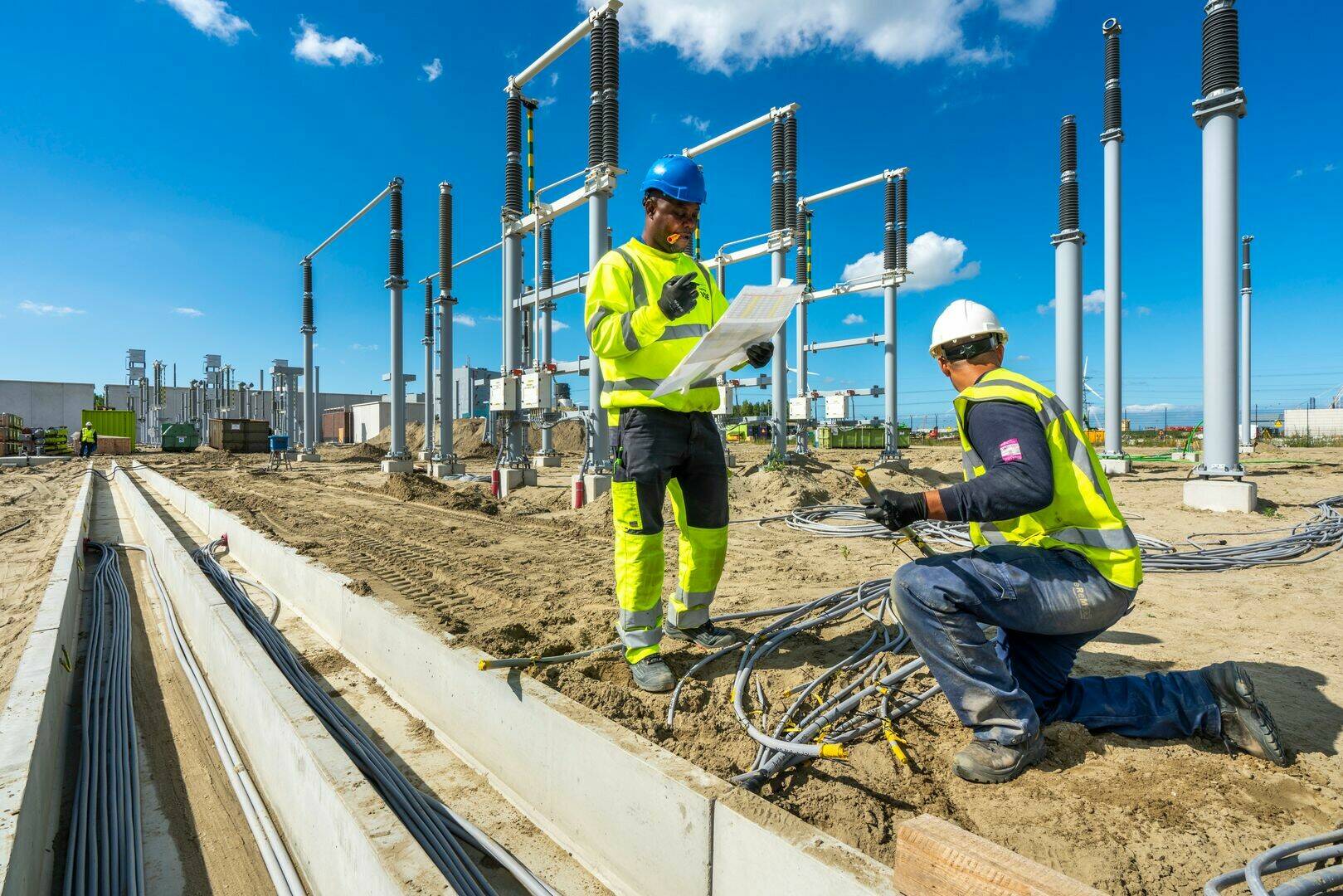Yes, definitely! By standardizing the common and repetitive (design) work, more time is created for the challenging and complex work that is not common and repetitive. This actually makes the engineer's work more challenging and enjoyable. In addition, TenneT's portfolio continues to grow and there is more demand for complex engineering work. If we look at greenfield (new), we can make a lot of speed with standards. And for brownfield (existing) we have to deal with technical complexity. So that's where the technical challenge is. The standard design helps with accelerating the expansions of our grid. That's crucial now.
The very idea is to make our work simpler and at the same time more challenging. Simpler by standardizing the repetitive work and focusing more on more complex, challenging projects. By investing in standard modules now, we can achieve a substantial acceleration here in the short term.
The focus is mainly on spatial integration. With the standard design, the environment has less influence on the layout of the high-voltage substation. What a landowner does have influence on is, for example, the finish of the terrain around the station, or the location of the access road. A landowner can influence this. This is always customized and depends on the location. Clear frameworks must be provided at the beginning of the participation process in which the surroundings can or cannot participate. For example, a high-voltage substation can be integrated (green) into its surroundings. This is one of the aspects on which the surroundings can contribute ideas/participate. The standard design helps speed up the expansion of our grid. This is important.
The expectation is that we can gain some time on the front end. We expect it to be easier to have the conversation with a design instead of having a conversation when there is no concrete proposal yet. The scarce capacity of technical people we save with modular construction can be used on other initiatives or projects. This allows us to accelerate and do more work with the same number of people.
We expect a lead time reduction of:
0,5 – 1 year in the planning and design phase AND
0,5 – 1 year in the construction phase.
This way of development and design gives more clarity. If all stations are built according to the same design, maintenance also becomes more predictable, easier to perform and therefore safer.
Not necessarily. The modular building blocks / modules are the same at every substation. For each station, the configuration - layout of the station can differ. The configuration in turn depends on the need for transport capacity.
Is the scale of a new 380kV substation fixed?
The base is fixed. The final size of a new high-voltage substation depends on the need for power - transmission capacity in a region. And the size depends on the number of fields. It does matter whether 10, 20 or, say, 30 fields are to be built. Also, a combination with a new 150 kV substation determines how big a new high-voltage substation will be. This can vary from site to site.




Yes, definitely! By standardizing the common and repetitive (design) work, more time is created for the challenging and complex work that is not common and repetitive. This actually makes the engineer's work more challenging and enjoyable. In addition, TenneT's portfolio continues to grow and there is more demand for complex engineering work. If we look at greenfield (new), we can make a lot of speed with standards. And for brownfield (existing) we have to deal with technical complexity. So that's where the technical challenge is. The standard design helps with accelerating the expansions of our grid. That's crucial now.
The very idea is to make our work simpler and at the same time more challenging. Simpler by standardizing the repetitive work and focusing more on more complex, challenging projects. By investing in standard modules now, we can achieve a substantial acceleration here in the short term.
The focus is mainly on spatial integration. With the standard design, the environment has less influence on the layout of the high-voltage substation. What a landowner does have influence on is, for example, the finish of the terrain around the station, or the location of the access road. A landowner can influence this. This is always customized and depends on the location. Clear frameworks must be provided at the beginning of the participation process in which the surroundings can or cannot participate. For example, a high-voltage substation can be integrated (green) into its surroundings. This is one of the aspects on which the surroundings can contribute ideas/participate. The standard design helps speed up the expansion of our grid. This is important.
The expectation is that we can gain some time on the front end. We expect it to be easier to have the conversation with a design instead of having a conversation when there is no concrete proposal yet. The scarce capacity of technical people we save with modular construction can be used on other initiatives or projects. This allows us to accelerate and do more work with the same number of people.
We expect a lead time reduction of:
0,5 – 1 year in the planning and design phase AND
0,5 – 1 year in the construction phase.
This way of development and design gives more clarity. If all stations are built according to the same design, maintenance also becomes more predictable, easier to perform and therefore safer.
Not necessarily. The modular building blocks / modules are the same at every substation. For each station, the configuration - layout of the station can differ. The configuration in turn depends on the need for transport capacity.
Is the scale of a new 380kV substation fixed?
The base is fixed. The final size of a new high-voltage substation depends on the need for power - transmission capacity in a region. And the size depends on the number of fields. It does matter whether 10, 20 or, say, 30 fields are to be built. Also, a combination with a new 150 kV substation determines how big a new high-voltage substation will be. This can vary from site to site.

